Component 2: Print Concepts
Standard 2.a: Children develop letter-sound correspondence and identify letters by sounds (phonemes) and names.
By the following age ranges, children typically, for example:
- Respond to visual stimuli in their environment
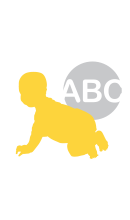
- Point to pictures in a book
- Engage with easy-to hold books, such as board books, when not able to be active (e.g., sitting in a car seat)
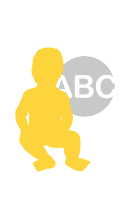
- Point to pictures and groupings of words (e.g., paragraphs) in books
- Recognize simple environmental print (e.g., McDonalds’ “M” and Walmart “W,” although they may not say the letter)
- Imitate the sounds of animals and people pointed to in books (e.g., making the sound of a quacking duck or a crying baby)
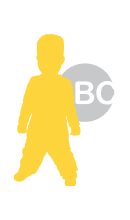
- Recognize more symbols and logos in the environment
- Recognize letters as a special form of symbol that can be individually named and produce a sound
- Recognize a few letters in their own name
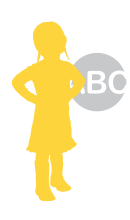
- Recognize and produce the sound of some letters of the alphabet, especially those in their own name as well as letters that occur frequently in environmental print
- With support, begin to produce the sound for some of the letters they recognize
- Recognize their own name or other common words in print (e.g., STOP)
- Recognize words that start with the same letter as their name
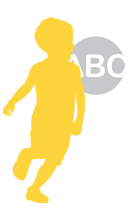
- Recognize and name at least half of the letters in the alphabet, including upper- and lower-case letters, letters in their own name (first name and last name) as well as letters that occur frequently in environmental print
- With support, recognize and produce the sound for letters
- Relate letters to specific sounds that the letters represent
- Recognize beginning sound in familiar words
- Demonstrate an understanding that strings of letters represent a sequence of spoken sounds
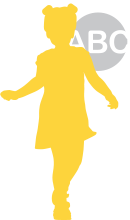
Standard 2.b: Children demonstrate book awareness and knowledge of basic print conventions; they understand that print carries meaning and spoken words are represented by text.
By the following age ranges, children typically, for example:
- Explore physical features of books
- Demonstrate an interest in books from among a collection of toys
- Demonstrate an interest in books by looking intently at or reaching for colorful pictures in books

- Demonstrate an increasing ability to handle books without assistance
- Hold books and look at pictures as if reading
- Respond to features of books, such as pictures and sensory features (e.g., the fluffy cotton in Pat the Bunny)
- Actively participate in shared reading experiences by pointing to and turning pages

- Open books and bring books to an adult to read
- Point out pictures in books and say the names of items in the pictures
- Actively participate in shared reading experiences by making one- or two-word comments and continuing to point to and turn pages
- Point to pictures and groupings of words (e.g., paragraphs) in books

- Recognize specific books by their covers and seek out specific pages in familiar books
- Know where books are kept, take them to an adult reader, and return books to their designated place when finished
- Make scribble marks on paper and “read” the meaning they assign to the marks
- Recognize some letters and numerals
- Choose to look at books, magazines, and other print materials without assistance

- Hold a book in correct orientation and turn pages from front to back, usually one at a time
- Demonstrate an understanding that print carries meaning and can be read
- Imitate the act of reading a book and demonstrate appropriate book-handling skills
- Handle and care for books in a respectful manner
- Demonstrate an awareness of various conventions of print (e.g., upper-and lower-case letters, different fonts) and indicate where to start reading on a page and how to progress across and down a page

- Identifies and describes the role of an author/ illustrator of a book
- Identify familiar words in books and the environment
- Make connections between illustrations and text
- Recognize their own name and those of their siblings or friends

